Argentia
By the end of the Second World War, the obscure fishing villages of Argentia and Marquise had been transformed into a mammoth US military base. The undertaking meant large-scale spending for the Americans, but for the area's 750 residents, it meant large-scale and long-lasting upheaval. Over the course of a year, the entire populations of both Argentia and Marquise – alongside three cemeteries – had been relocated, while construction crews worked 20-hour days to dismantle the once-quiet community.
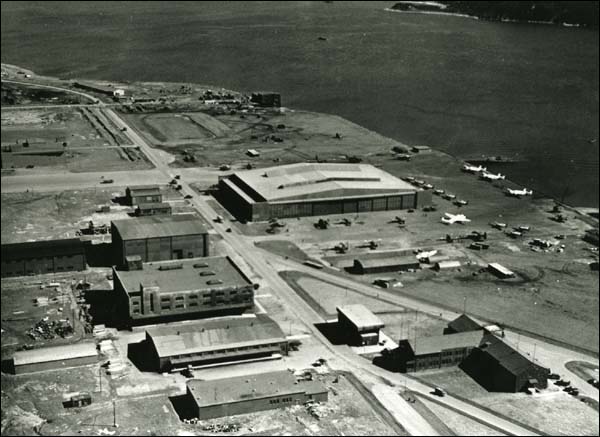
Under the Leased Bases Agreement with Britain in 1940, the United States had obtained rights to build military bases in Newfoundland. In mid-September of that year, a team of American army and navy personnel arrived in Placentia Bay to investigate possible base sites. Impressed by the area's ice-free and landlocked harbour, its flat land – which would prove ideal for runway construction – and its already-existing railway terminal, the group recommended building a naval air station at Argentia and an army base in the neighbouring village of Marquise.
Construction boom
Although base construction began at Argentia in December 1940, work did not truly get underway until one month later when 1,500 American construction and engineering personnel arrived aboard the SS Richard Peck. The steamship remained docked in Argentia's harbour for two years, where it served as living quarters for American workers.
Alongside the Americans, thousands of Newfoundlanders also found work at the construction site. About 4,000 local workers were employed on the base at any one time and, by the end of the war, it is estimated that between 10,000 and 15,000 Newfoundlanders had worked on the base.
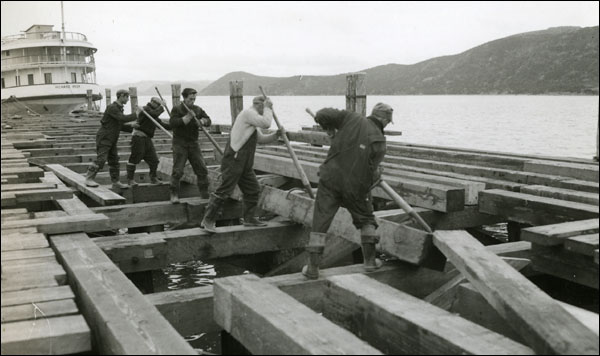
At the height of construction, labourers worked two alternating ten-hour shifts each day, followed by a four-hour shutdown to allow the machinery to rest. By August, even more employment became available as construction began on the Marquise army base, later known as Fort McAndrew.
Such readily-available and consistent employment was welcomed by a country still emerging from a period of economic hardship following the First World War and the Great Depression. The lure of employment proved so irresistible that many Newfoundlanders travelled to Argentia from nearby communities and lived in fishing schooners anchored in the bay until more suitable housing could be built. In the meantime, they rowed to and from work in dories.
Dislocated Residents
Although base construction brought economic prosperity to the area, it also meant immense hardship for the residents of Argentia and Marquise, all of whom were asked to hand their land over to the Americans. Before the war, Argentia and Marquise had populations of 477 and 283 respectively. By early 1942, all of those people had gone.
Approximately 200 properties in Argentia and Marquise were expropriated by the Americans, and the first eviction notices were delivered as early as December 1940. Many residents, including those vacating in the wintertime, were only given a month to leave and received between $3,000 and $6,000 in compensation.
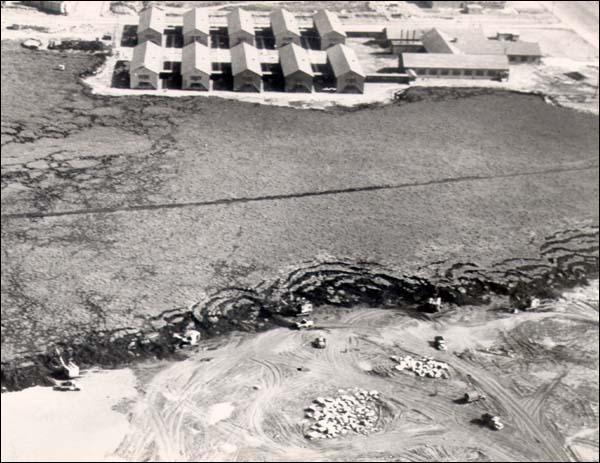
It was an amount that many felt was too small to adequately cover the emotional and financial burdens of moving. Residents frequently had to abandon farmland that had constituted a major part of their livelihoods and had been passed down through generations.
Angered by the disorganized expropriation procedures, residents formed a citizens' committee in January 1941 to protect their interests. Most of the blame was directed at the Commission of Government and not at the Americans, who were generally perceived as having brought much-needed employment to the area. The non-elected Commission of Government, on the other hand, was accused of not adequately defending the rights and interests of the people.
The committee made two major requests of the Commission of Government: that residents who wished to remain together should be able to resettle as a community, and that the new community should be located close to Argentia and its many employment opportunities.
The Commission of Government acquiesced and in June chose the village of Freshwater, about a mile distant from Argentia, as an appropriate site for resettlement. Although most Marquise and Argentia residents moved to Freshwater, some also settled in Placentia and neighbouring communities.
The Base
Base construction, meanwhile, was proceeding rapidly and at great financial cost to the United States government, which poured more than $53 million dollars into the undertaking. With its naval base and air station on the north coast of Argentia Harbour and the army base to the south, the massive installation cost more than any other American military base built overseas during World War II.
Commissioned in 1941, the naval base and air station were fully operational when the United States officially joined the war in December of that year. The site consisted of three runways, each measuring 5,000 feet in length, more than 2,000 feet of wharf, a floating dry dock, hangars, storage space for 15 million gallons of gasoline and oil, and living quarters.
Throughout the war, Allied forces used Argentia for their anti-submarine air patrols and task force escorts. The largest American task force in the Atlantic, made up of five carriers and more than 50 destroyers and patrol craft, was also based there.
Fort McAndrew, meanwhile, served as a base for an infantry company, a seacoast artillery group, an anti-motor torpedo boat battalion and an anti-aircraft artillery company. The army's main function there was to defend Argentia's naval and air base.
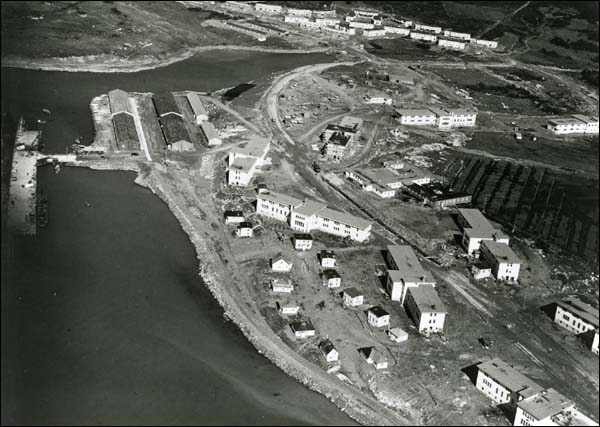
Also based at Argentia were the Atlantic Weather and Ice patrols. The former regularly updated weather conditions on the North Atlantic, while the latter reported on the position of icebergs.
In August 1941, an historic meeting occurred off Argentia's coast when British Prime Minister Winston Churchill and American President Franklin Roosevelt drafted the Atlantic Charter – a joint declaration of how peace should be maintained in a post-war world – aboard a warship anchored in the bay. Although never formally signed, the document later became the basis for the United Nations Charter.
On March 1, 1942, Argentia-based forces sank their first U-boat when Ensign William Tepuni bombed U-656. One month earlier, however, more than 200 American sailors had died about 40 miles south of the base when the supply ship, the USS Pollux and the destroyer USS Truxtun, ran aground off St. Lawrence Harbour.
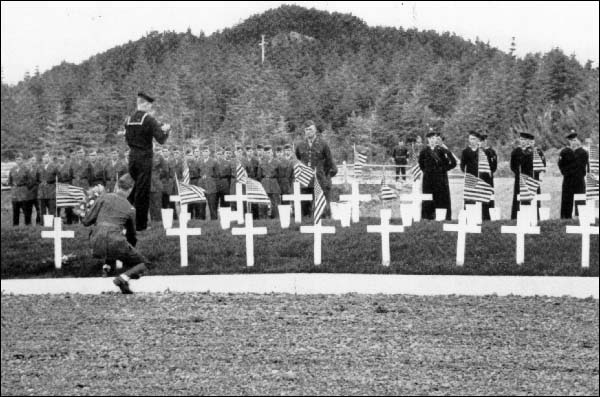
By 1943, more than 12,000 American military personnel were stationed at the Argentia base, which extended over 3,392 acres.
War's End
Near the end of the war, German prisoners – typically survivors of bombed U-boats – were often interned at Argentia, with the first ones arriving in November 1944. Alongside these prisoners, two captured German destroyers and two captured U-boats also arrived in Argentia for servicing while en route to the United States. It was a dramatic turn of events for a harbour that just five years earlier was largely frequented by local fishing boats.
After the war, American forces used Argentia for the detection and monitoring of foreign submarines and other naval vessels. Military activity in the area gradually decreased over the decades until 1994, when the last remaining American forces withdrew from the area and handed over its facilities to the province.




